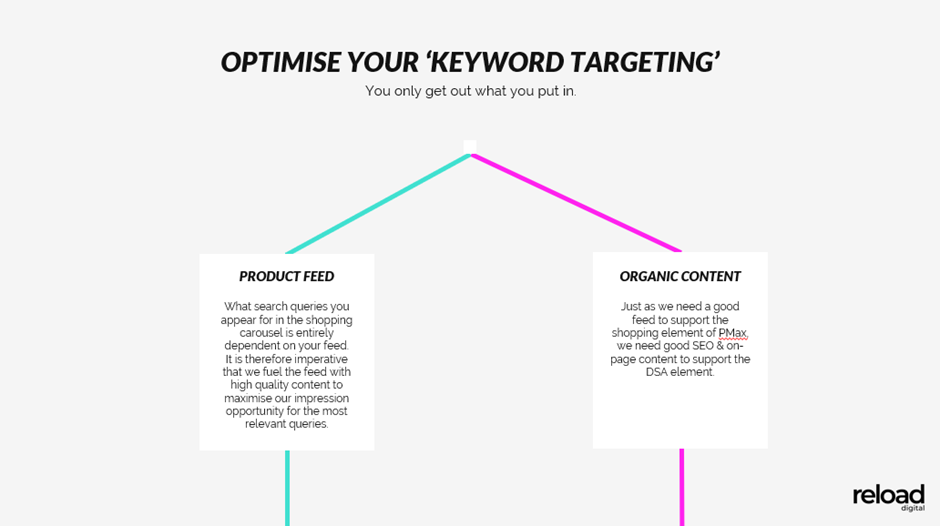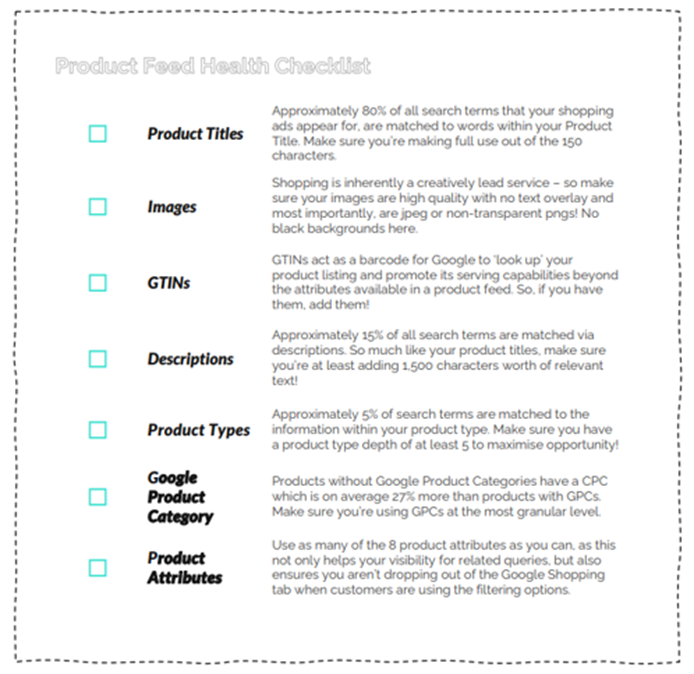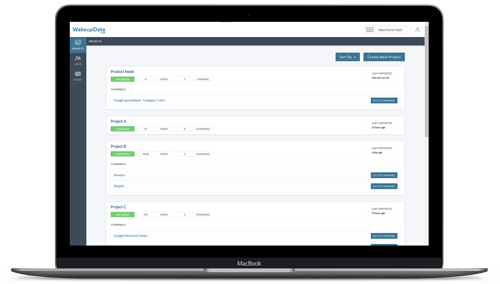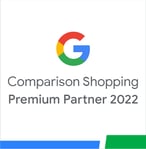Optimising the great, un-optimisable Performance Max campaign!
Posted on March 6, 2023 (Last Updated: October 11, 2023)
My top 3 tips for a successful Performance Max campaign can be summarised in one sentence - manipulate your input to maximise your output.
There’s so much we don’t have control over anymore when it comes to optimising your PMax campaign. We can’t bid on certain keywords or even see what those search terms are that we’re serving for; we can’t control how much of our budget goes towards each of the placements; we can’t even really view the performance of our individual asset groups to see which one is performing best, being prioritised etc.
Therefore we really need to rely on the information that we are putting into the campaign, in order to maximise what comes out of it.
Tip 1: Optimise your “keyword targeting”
The keywords you appear for rely solely on two methods of input - [1] your product feed, and [2] your website content.

[1] Product feed
What search queries you appear for in the shopping carousel is entirely dependent on your feed. It is therefore imperative that we fuel the feed with high quality content to maximise our impression opportunity for the most relevant queries.
The best way to optimise your feed is to invest in a feed optimisation partner. At Reload Digital we are great fans of product feed management platforms, which allow us to set up rules to optimise the feed to fill in missing attributes, make full use of character counts and even test different images as what resonates in Google Shopping may not be what resonates on your product page.
Given 80% of search terms are matched to your product title alone, our biggest recommendation would be to start here. Google reads left to right, placing the strongest emphasis on the first few keywords in your title. So think about what keywords you want to prioritise to align to your brand goals. Are you wanting to maximise new customer acquisition and therefore will prioritise your product category terms? Or are you struggling to compete with your resellers and therefore want to prioritise your brand name?
We’ve also pulled together a little feed health checklist below for the key attributes that are going to have the biggest impact on your PMax campaign serving capabilities.

[2] Organic content
Just as we need a good feed to support the shopping element of PMax, we need good SEO & on-page content to support the DSA element.
My first recommendation would be to jump to search console and review the queries you’re ranking for. What are we serving for organically? What’s the ratio of unbranded to branded clicks and impressions. What’s unbranded CTR like?
Generally speaking as a goal we want to be making sure that unbranded queries are contributing around 30-40% of all impressions.
Any less than this means that your site doesn’t have enough content to support generic queries and the flow on effect of this will be that your Pmax campaign will struggle to attract new customers.
However, there is a second element to this – clicks.
If you’re getting a lot of unbranded impressions but very few clicks then it’s clear you aren’t appearing for the right terms. You’re then feeding this directly into your PMax campaign (in the DSA element) and actually paying to be serving for the wrong terms.
We therefore want to make sure that around 20% of our clicks are unbranded. If it’s not, then it’s time to reach out to your fellow SEOers to help support you here!
Tip 2: Give your creative the same attention you give it for Meta
Performance Max is entirely responsive – meaning it will work with the assets you upload (and the ones you don’t) to work these into different ad formats and sizes to maximise your ad inventory opportunity with minimum creative input.
Given such a huge element of this campaign is creatively lead, we have to make sure we’re giving Google the highest quality content to work with.
Considerations for Creating A+ Creative
- Making full use of all 20 images
- Ad refresh the same time as Paid Social
- Uploading YouTube content to override auto-created videos
- Create HTML5 creative to control look & feel
If you don’t upload YouTube creative to your PMax campaign then Google will automatically create content for you which can be less than ideal, particularly for premium brands. A way to see what Google has created is to go to your Asset Groups and then go to ‘View Details’ and scroll through the list until you see the video content.
If you’re also finding that the responsive display element of PMax is not aligning with your brand image, we’d recommend investing in HTML5 assets which allow you to have complete control over the end look.
Tip 3: Segment your inventory
Your feed likely contains a plethora of products, all with varying levels of interest, conversion propensity and bottom line profit. Rather than funnelling your entire inventory in one campaign, we’d recommend segmenting your feed (via custom labels) and then creating separate PMax campaigns that hinge off these custom labels.
There are 3 different ways you can segment your inventory:
[1] Manual segmentation
Segmenting your feed by product category, sale versus non-sale etc.
This strategy is great if you have certain hero categories that you’d like to push (or restrict) and is really useful for sales - however it is a static approach that doesn’t consider individual product performance. That’s when dynamic performance labels come into play.
[2] Dynamic Performance Labels
Dynamic performance labels allow us to look back on the last 30 days of performance & segment the feed into different buckets (High Revenue, Low ROAS, No Conversions etc.) so that we can segment our campaigns and put the money behind what’s going to move the needle the most. This can usually be set up through your shopping optimisation partner by connecting the feed platform to your Google Ads account through an API to pull in that historical data at the SKU level.
One limitation of this strategy however is that it doesn’t consider COGS. Your highest revenue product might actually have the lowest margin and therefore contribute half the profit of a lower volume, higher profit product. This is where you can look at a Profit Margin strategy.
[3] Profit Margin Labels
Profit margin labels go a step further as to segment the feed based on profit, allowing us to have more bottom line impact.
Here we can actually import the COGS into our feed and calculate the profit margins on our products at the SKU level and then bucket these into High, Med or Low profit. We can then use these buckets to form the basis of our campaign segmentation, setting different ROAS allowables for each.
For instance we might set up the Low profit campaign to have a minimum ROAS of 600%, meanwhile the High Profit campaign can afford to have a lower ROAS of 300%. This will help Google to actually prioritise the products that are going to move your bottom line product, rather than just going after surface level metrics such as revenue and ROAS. We essentially move from a ROAS to POAS model (profit over ad spend).
Summary
To sum up, you’re only going to get out what you put in.
As we lose more and more visibility and control over our campaigns and the ability to reactively optimise, we need to be ensuring what we are feeding those campaigns with the best content from the onset. Now more than ever you’re going to have to work together with your fellow channel owners, SEO, Creative & Content to get the most out of your PPC campaigns.
Manipulate the input to maximise the output.
Author:
Nicki Eggie
Head of Paid Advertising



